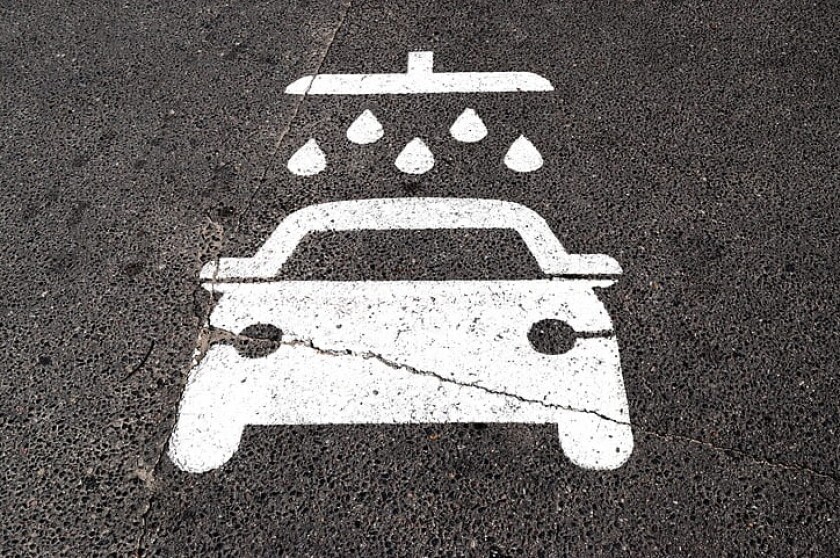If you love your car, almost nothing is more satisfying than washing it yourself and admiring the finished product. Sure, you can take it to an automatic car wash, but no one will take better care of it than you. Properly washing your car is key to the paint's longevity as well as its resale value. Although there are countless products on the market to help make car washing faster, easier, and more convenient all around, the proper steps to washing your car hardly ever change. This article will help you properly wash your car with some of the best products on the market to keep it looking new for years to come.
Things you'll need:
- Hose
- Car soap
- Pressure washer (electric or gas) and foam cannon or foam gun
- 2 buckets with grit guards
- Wheel cleaner
- Wheel brush
- Car wash mitt
- Microfiber cloth or a drying chamois
- Car Polish
Before you get started with washing your car, you'll need to gather the right tools for the job. These tools will depend on what you have available at home or your apartment. One of the more critical determining factors is if you are able to use a pressure washer at your residence. There are two primary types of pressure washers: gas and electric. A gas pressure washer will provide higher pressure overall, but one major downside with gas-powered pressure washers is the sheer amount of noise they generate. If you live in an apartment and you don't want to disturb the neighbors, an electric pressure washer might be more suitable. With any pressure washer, you'll need to be extra careful not to damage the paint. For reference, a safe PSI (Pounds per Square Inch) rating would range from around 1200 to 2000 PSI and 1.4 to 1.6 GPM (Gallons Per Minute). Many pressure washers can accommodate additional spray nozzles; if one is available, a foam cannon is a great attachment that provides maximum suds.
If you are not able to use a pressure washer, the next best alternative is a garden hose and foam gun attachment which will spray your vehicle with a mixture of water and car soap.
In this case, a good two-bucket system will do just fine. One bucket will be used for soapy water; the other is reserved for rinsing your mitt out as you wash.
Step 1
Park your car in a shaded area and try not to work in direct sunlight. Typically, the first step is to rinse your vehicle from top down, but some newer wheel degreasers have you spray the wheels while they are dry. This is actually a great strategy because wheels can require the most elbow grease and be time consuming. If your wheels do not have a lot of road grime and brake dust, then a simple spray should be sufficient. On the other hand, if you go weeks on end without cleaning, a wheel brush should also be used.
Bestcovery recommends the Car Guys Premium Wheel Cleaner. This particular spray is pH-balanced and safe for all wheels, including alloy, aluminum, and plasti-dipped. Once you spray it on your wheels, the cleaner will turn a pinkish color as it cleans. If you need to put in a little extra work, Bestcovery recommends the TAKAVU Master Wheel Brush which has soft bristles but can help remove the remaining dirt and grime. It is a bestseller on Amazon and has excellent reviews. Once you have sprayed the cleaner and used the brush, rinse thoroughly.
Step 2
After you have washed your wheels, spray your car with water from top to bottom. Next, either using the foam gun, foam cannon, or a bucket of soapy water, sud up your car from top to bottom. We recommended "Chemical Guys Honeydew Snow Foam Car Wash Soap" which works well regardless of whether it's used in a bucket or foam cannon/gun. Use a microfiber wash mitt such as Meguiar's X3002 Microfiber Wash Mitt to then wipe down your vehicle. The car soap will act as a lubricant between the wash mitt and paint to prevent abrasive contaminants from damaging the clear coat. Always wipe the bottom of your vehicle last because that is the dirtiest part of the vehicle. You definitely don't want to introduce road grime to the rest of the paint. Let the soap get to work - simply leave it to sit for a minute or two, and the detergents will lift dirt and grime off the paint. Don't let it sit too long and dry, though; rinse your car thoroughly with water from top to bottom.
Step 3
The last step is drying your car. You might see a trend here but you will want to dry from top to bottom. Any good microfiber cloth or drying chamois will do just fine. Be sure to wring out your towels frequently to ensure you are getting the most absorption.
Steps 1 through 3 are essentially all you need to do to keep your car looking good all year round. Using a clay bar and waxing your vehicle are some additional steps above and beyond to care for your car's clear coat and to keep the paint in optimal condition. Once your vehicle has been washed thoroughly, it is now time to clay it. A clay bar will help remove contaminants from the clear coat. Keep in mind you will need to lubricate the surface as you are claying in order for the clay bar to run smoothly over the paint. Meguiar's Clay Kit is a user favorite, and is frequently used by professionals as well. More recently, there are products on the market that claim to remove contaminants without clay. It will not do as good of a job as clay but it is a quicker, more convenient alternative. The Griot's Garage Surface Prep Mitt is a recommended alternative to a clay bar. You will still need to use a surface lubricant such as Chemical Guys Luber Synthetic Lubricant and Detailer.
Finally, it's time to make your car shine with a wax or sealant. What is the difference between a wax and sealant? A car wax is derived primarily from natural compounds of a particular palm tree and borrows its name from the tree itself; you'll typically see it referred to as carnauba wax. Carnauba wax can make your paint shine to a mirror-like finish, but the drawback is that it does not last as long. A sealant is synthetic and is best suited for vehicles that are exposed to extreme weather environments such as heavy snow or blazing hot temperatures. It's more durable than a carnauba wax and offers superior water repelling properties. If you are looking for a great carnauba wax, Bestcovery recommends the P21S Carnauba Wax. It provides a deep shine and is free of any additives, dyes, and perfumes. Paint sealants have become increasingly popular lately and there are many to choose from. Despite costing less compared to other sealant products, Meguiar's G18216 Ultimate Liquid Wax is a great choice in this space. It even comes with an applicator pad and microfiber towel. If you would like to layer, it is recommended to first use the sealant then the carnauba wax on top of it. Be also sure to read our guide on the best car paint glazes for a deep shine.
Washing a car can be time consuming, but it's well worth the effort and can contribute to pride of ownership.
Additional car wash hacks:
- Dry your car quicker by first going over the flat parts of the vehicle (roof and hood) first with one towel to push off all excess water, then dry as normal.
- Use one of the towels you dried the exterior with (not the wheel towel) to wipe down the interior dashboard, center console, and cup holders. The damp towel will pick up the dust more easily.
- Use your wheel towel to wipe down the insides of the door panels and gas door.
- If you're able to, rinse your vehicle in distilled water to reduce hard water spots.






